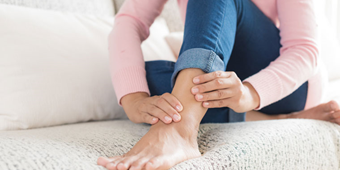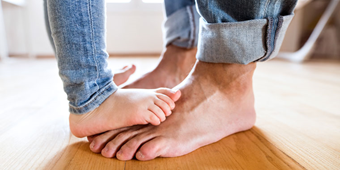Hand, Foot, and Mouth Disease: A Real Pain

Find Your Perfect Match
Answer a few questions and we'll provide you with a list of primary care providers that best fit your needs.
With all the different kinds of sickness your family can pick up, it can be hard sometimes to figure out what direction their symptoms are pointing.
Hand, foot, and mouth disease (HFMD) is one of those sicknesses that has distinct symptoms, but you might not recognize them if you’ve never seen it before.
Caused by different viruses, hand, foot, and mouth disease (HFMD) is common in young children and babies who haven’t developed immunity to the viruses yet. Though adults can catch HFMD, it’s uncommon and the symptoms are milder.
Signs and Symptoms
If your child has HFMD, the symptoms will include:
A rash or painful red spot that can turn into blisters on the palms of the hands, soles of the feet, and sometimes in the creases of the knees, elbows, butt, or genital area.
- Fever
- Generally not feeling good
- Little appetite
- Painful sores in the mouth that begin as flat red spots
- Sore throat
The symptoms usually show up in stages, starting with fever, loss of appetite, and just feeling generally sick. The sores typically show up a few days later.
Because HFMD is a viral illness, antibiotics won’t help. This illness should run its course in seven to 10 days. But it’s important to treat the symptoms.
Give your child over-the-counter acetaminophen or ibuprofen to help bring down the fever.
“If they aren’t able to eat or drink, these kids are more prone to get dehydrated, so parents and caregivers need to make sure that they are keeping them hydrated,” says Geetha Ambalavanan, MD, of Fairborn Medical Center, part of Premier Physician Network. “Offering anything cold, like popsicles or ice cream, may help numb the pain that they have. And also something soft, like yogurt or applesauce, can help them with the swallowing.”
HFMD is most common during summer months, but people also can get it during the spring and fall.
Stop the Spread
You can catch HFMD multiple times because the disease is spread by several different viruses. And it’s highly contagious, especially during the first week of the sickness.
“So, when someone who has the disease sneezes or coughs, the people around them will inhale the droplets or can pick up devices,” Dr. Ambalavanan says. “It’s also spread through the blister fluids, and in the stool. People who take care of kids who have had hand, foot, and mouth disease … need to make sure they wash their hands with soap and water thoroughly to prevent the spread.”
She also recommends wiping down tables, toys, doorknobs, tables, and any other common areas that kids share or are touched frequently to try to keep the germ-sharing to a minimum.
The Centers for Disease Control and Prevention also recommends not touching your eyes, nose, or mouth with unwashed hands. Also, you should avoid kissing, hugging, sharing cups, and sharing eating utensils with anyone who has HFMD.
To learn more about hand, foot, and mouth disease, talk to your doctor or health care provider or search for a provider.
Click play to watch the video or read video transcript.
Find Your Perfect Match
Answer a few questions and we'll provide you with a list of primary care providers that best fit your needs.
Source: Geetha C. Ambalavanan, MD, Premier Health Primary Care – Beavercreek; Centers for Disease Control and Prevention






